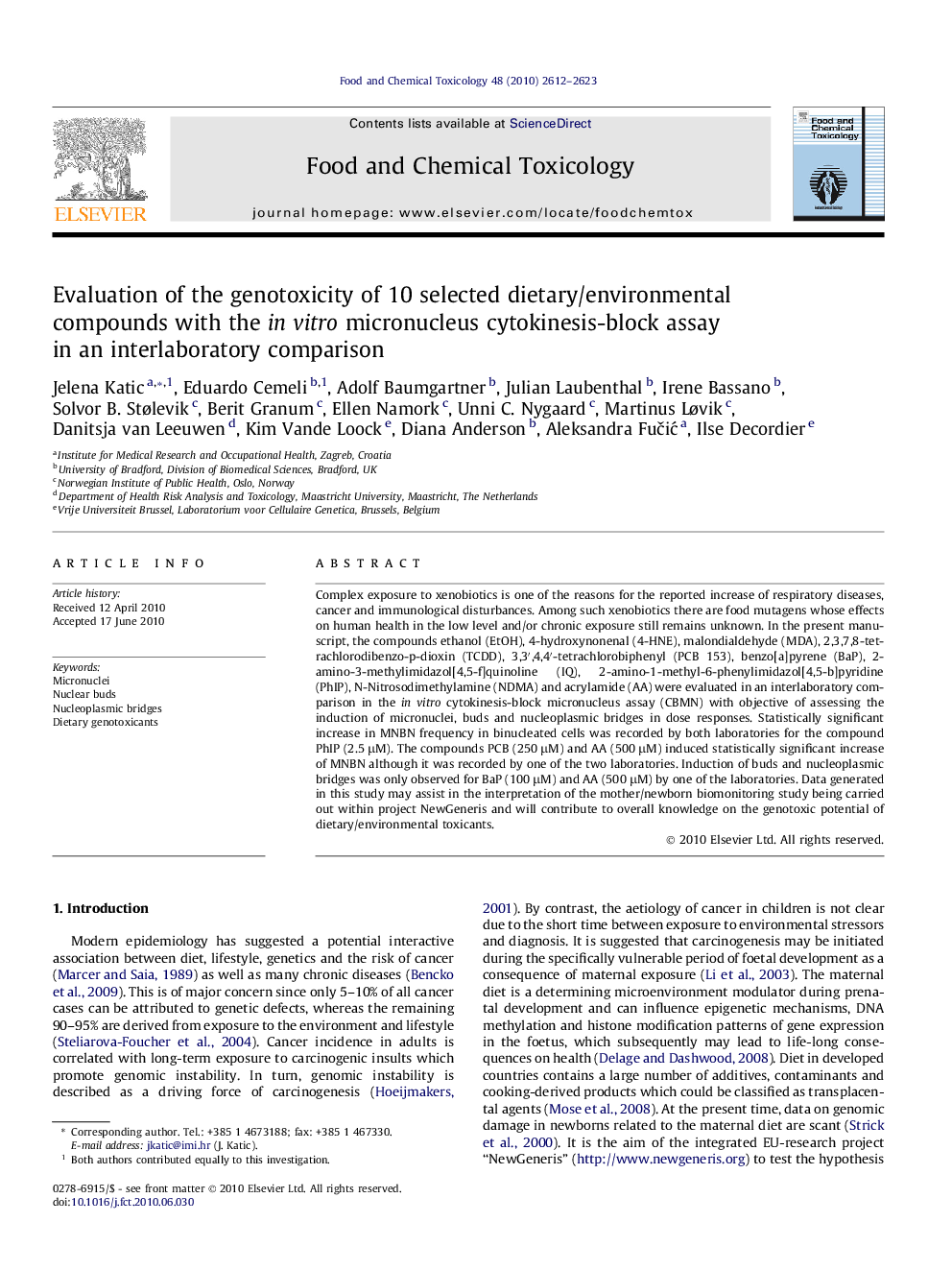| Article ID | Journal | Published Year | Pages | File Type |
|---|---|---|---|---|
| 2585564 | Food and Chemical Toxicology | 2010 | 12 Pages |
Complex exposure to xenobiotics is one of the reasons for the reported increase of respiratory diseases, cancer and immunological disturbances. Among such xenobiotics there are food mutagens whose effects on human health in the low level and/or chronic exposure still remains unknown. In the present manuscript, the compounds ethanol (EtOH), 4-hydroxynonenal (4-HNE), malondialdehyde (MDA), 2,3,7,8-tetrachlorodibenzo-p-dioxin (TCDD), 3,3′,4,4′-tetrachlorobiphenyl (PCB 153), benzo[a]pyrene (BaP), 2-amino-3-methylimidazol[4,5-f]quinoline (IQ), 2-amino-1-methyl-6-phenylimidazol[4,5-b]pyridine (PhIP), N-Nitrosodimethylamine (NDMA) and acrylamide (AA) were evaluated in an interlaboratory comparison in the in vitro cytokinesis-block micronucleus assay (CBMN) with objective of assessing the induction of micronuclei, buds and nucleoplasmic bridges in dose responses. Statistically significant increase in MNBN frequency in binucleated cells was recorded by both laboratories for the compound PhIP (2.5 μM). The compounds PCB (250 μM) and AA (500 μM) induced statistically significant increase of MNBN although it was recorded by one of the two laboratories. Induction of buds and nucleoplasmic bridges was only observed for BaP (100 μM) and AA (500 μM) by one of the laboratories. Data generated in this study may assist in the interpretation of the mother/newborn biomonitoring study being carried out within project NewGeneris and will contribute to overall knowledge on the genotoxic potential of dietary/environmental toxicants.
